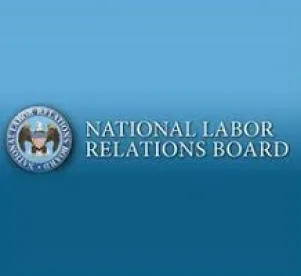In a three to one decision issued on January 25, 2019, the National Labor Relations Board (“NLRB” or the “Board”) in SuperShuttle DFW, Inc., 367 NLRB No.75 (2019), the Board announced it was rejecting the test adopted in 2014 in FedEx Home Delivery, 361 NLRB 610 (2014) for determining whether a worker was an employee or an independent contractor and returning to the test it used prior to the FedEx Home decision.
As the decision in SuperShuttle makes clear, the determination of whether a worker is an employee entitled to the protections of the National Labor Relations Act (the “Act”), or an independent contractor will continue to be based on a case by case examination of the specific facts. Under Section 2(3) of Act, only employees and not independent contractors are entitled to the Act’s protections.
SuperShuttle involved a union petition for an election among a group of franchisees operating SuperShuttle airport vans at Dallas-Fort Worth Airport. In response to the petition, SuperShuttle, the franchisor, argued that the franchisees who were seeking representation were not employees but rather independent contractors and as such were not entitled to vote in an NLRB election or to exercise the rights granted to employees, but not independent contractors, under the Act.
The Board’s Acting Regional Director (“ARD”) based on the facts of the case, found that the franchisees were independent contractors and not employees, and dismissed the petition. The petitioner, Amalgamated Transit Union Local 338, appealed the ARD’s decision, arguing that based on the degree of control exercised by the franchisor’s operations and terms and conditions, they were employees and not independent contractors.
As the Board explained in its Press Release, the decision to affirm the ARD’s conclusion that the drivers in the case were not employees turned on the facts of their franchise agreements with SuperShuttle:
The Board found that the franchisees’ leasing or ownership of their work vans, their method of compensation, and their nearly unfettered control over their daily work schedules and working conditions provided the franchisees with significant entrepreneurial opportunity for economic gain. These factors, along with the absence of supervision and the parties’ understanding that the franchisees are independent contractors, resulted in the Board’s finding that the franchisees are not employees under the Act. The decision affirms the Acting Regional Director’s finding that the franchisees are independent contractors.
The Board Returns to its pre-2014 Standards for Distinguishing between Employees and Independent Contractors
As the majority in SuperShuttle DFW explained, under the standard adopted in 2014 in FedEx Home Delivery, the Board had essentially created a new requirement for finding workers to be independent contractors and not employees.
The Board majority’s decision in FedEx did far more than merely “refine” the common-law independent contractor test – it “fundamentally shifted the independent contractor analysis, for implicit policy-based reasons to one of economic realities, i.e., a test that greatly diminishes the significance of entrepreneurial opportunity and selectively overemphasizes the significance of “right to control” factors relevant to perceived economic dependency. (citations omitted). Today, we overrule this purported “refinement.”
(emphasis added)
The majority opinion in SuperShuttle DFW, joined by Chairman Ring, Member Kaplan and Member Emanuel returned to the Board’s longstanding prior practice of considering “all of the common-law factors as described in the Restatement (Second) of Agency:”
a) The extent of control which, by the agreement, the master may exercise over the details of the work.
b) Whether or not the one employed is engaged in a distinct occupation or business.
c) The kind of occupation, with reference to whether in the locality, the work is usually done under the direction of the employer or by a specialist without supervision.
d) The skills required in the particular occupation.
e) Whether the employer or the workman supplies the instrumentalities, tools, and the place of work for the person doing the work.
f) The length of time for which the person is employed.
g) The method of payment, whether by the time or by the job.
h) Whether or not the work is part of the regular business of the employer.
i) Whether or not the parties believe they are creating the relation of master and servant.
j) Whether the principal is or is not in business.
As the majority in SuperShuttle explained, citing to the US Supreme Court’s 1968 decision in NLRB v. United Insurance Co. of America, 390 U.S. 254 “there is no shorthand formula” and “all the incidents of the relationship must be assessed and weighed with no one factor being decisive,” and that what is important is that the total factual context is assessed in light of the pertinent common law principles.” Id. at 258.
In FedEx Home Delivery the Board had adopted a test that made it more difficult to prove an independent contractor relationship
In FedEx Home Delivery, a Board majority composed of appointees of President Obama had adopted a test that moved beyond the traditional common law standards for determining whether a worker was an employee or an independent contractor “by creating a new factor (‘rendering services as part of an independent business’) and then making entrepreneurial opportunity merely ‘one aspect’ of that factor.” 367 NLRB No. 75 at page 1.
As the majority in SuperShuttle explained, the Board majority in FedEx was no “mere refinement,” but rather a shift of the independent-contractor test to “one of ‘economic dependency,’ a test that was specifically rejected by Congress.” 367 NLRB N0. 75, at p. 8-9.
What Happens Now?
It is notable that although the Board announced its return to the former test for determining whether workers are independent contractors or employees, the ARD had reached the conclusion that the SuperShuttle drivers were independent contractors under the test adopted in FedEx Home.
The modification of the test for making this determination by discarding “the undue significance of a worker’s entrepreneurial opportunity for economic gain” is likely to mean that workers who traditionally would have been found to be independent contractors and outside the Act’s protections, will be found independent contractors in the future once again.
It is clear that detailed factual analysis will be required in all cases. It would be appropriate, given the reliance on the terms of the franchise agreements in SuperShuttle and the fact that those agreements did demonstrate that the drivers retained significant discretion to run their businesses and knew they would be independent contractors and not employees when they entered into those agreements, for businesses that rely on independent contractor and other such arrangements to review and where appropriate update their agreements and other operating documents.




 />i
/>i

